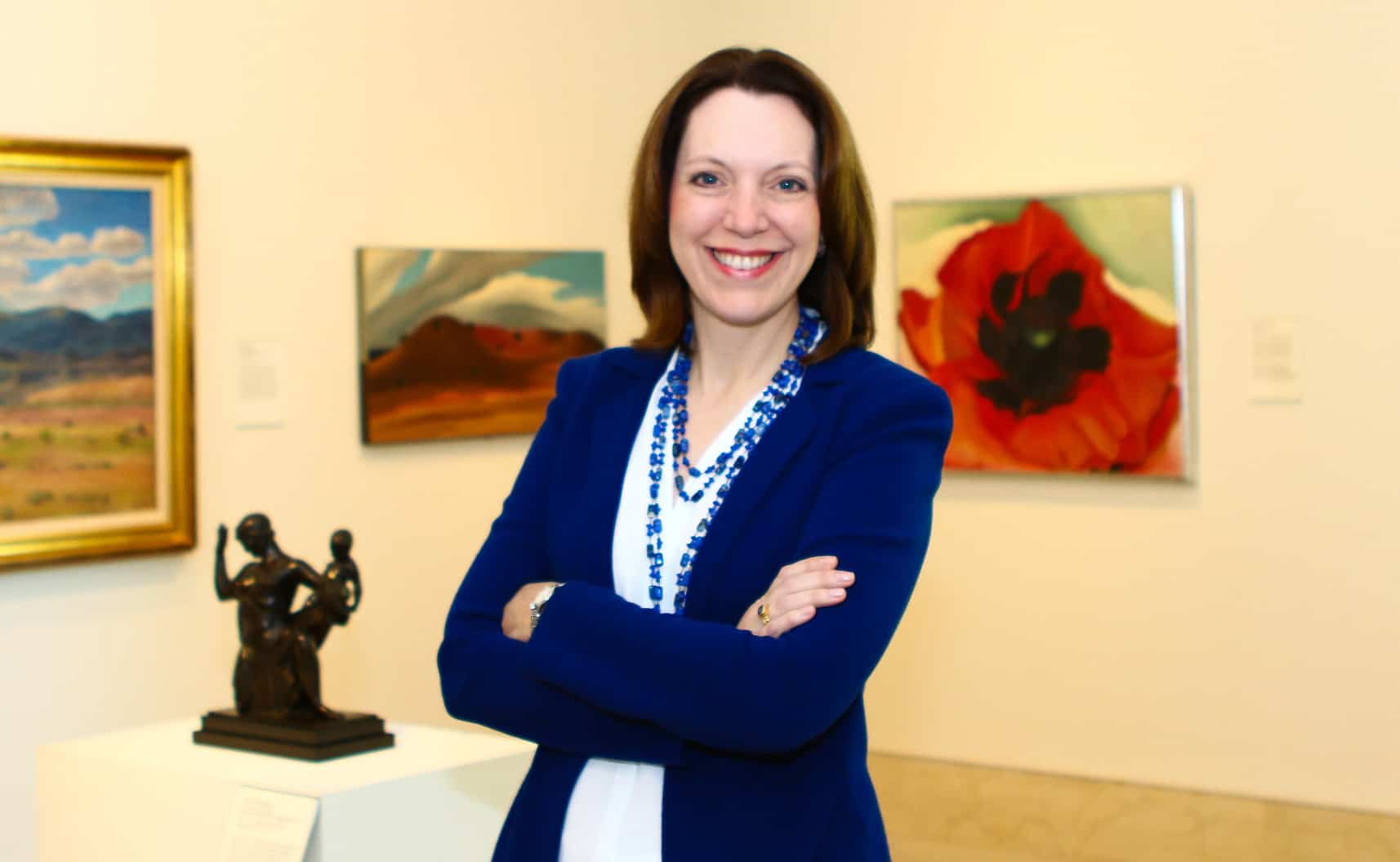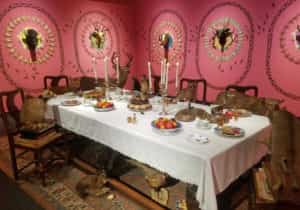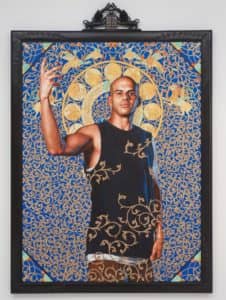Create
Exit interview: Museum of Fine Arts’ Kristen Shepherd

As a Clearwater high schooler, Kristen A. Shepherd had a fondness for St. Petersburg’s venerable Museum of Fine Arts. It was, she remembered, “kind of dusty and sweet” in the 1980s, when she enjoyed solitary afternoons reading in the museum’s gardens.
Shepherd’s last day as executive director of the museum was Aug. 3. After nearly six years as the instigator of transformative change, of innovative and imaginative programming that heightened the sweet and eliminated the dusty, she surprised the bay area art world by announcing her departure.
“The last couple of years have been incredibly demanding,” Shepherd told the Catalyst, “so I am looking forward to taking a break for the rest of the summer while I gear up for what’s next.”
Steering the museum through the darkest days of the pandemic, she said, was taxing. “I am really excited about my next chapter even though it means I will be leaving the Tampa Bay area,” she said, adding that she will be “happy to share more when all the details are finalized.”
Said Dimity Carlson, Board of Trustees chair, in a prepared statement: “We are grateful for Kristen’s dedication and vision over the past five and a half years.”
Carlson credited Shepherd for guiding the MFA “through a period of substantive growth. Kristen has also facilitated acclaimed exhibitions and important loans and accessions. Additionally, she put a strong team in place to continue to move the museum forward.
“On behalf of the Board of Trustees and the entire museum community, we wish Kristen all the best and look forward to an on-going friendship.”
Armed with a Master’s in Art History from George Washington University, Shepherd was recruited for the MFA position following successful tenures with Sotheby’s, the Whitney Museum of American Art and the Los Angeles County Museum of Art.
“I think I was the right leader at the right time to get the MFA moving in the right direction,” Shepherd said. “I am proud of everything we accomplished, and it felt like the right moment to pass the baton to the museum’s next leader, who will build on the accomplishments and progress of the last five years and tackle the challenges of the next five years.”
The interview has been edited for brevity.
St. Pete Catalyst: When you arrived in 2016, you told the board the museum needed the “dust” shaken off – that you wanted to expand its profile, through programming and marketing, and move it into the 21st century. Do you feel as if you’ve accomplished that, and by what means?
Kristen A. Shepherd: We definitely shook the dust off and changed the museum, making it more relevant, professional and inclusive. We did it by building a strong team and refocusing every aspect of our work to promote the MFA as a welcoming, exciting place to be. We demonstrated the changes in many ways – from updating our graphic identity to the gorgeous gallery renovations in 2020, which completely changed the way our audience experiences the collection.
The MFA is not the same museum it was six years ago because slowly, over time, we created an almost entirely new team and welcomed professionals in every facet of the museum’s operations. Over the course of several years, the Board supported me in hiring first rate museum professionals for newly created positions as well as vacancies when staff members moved on to other opportunities or left the museum field entirely. I consider having built a forward-looking new team with great energy one of the most significant contributions I could make to ensure the museum’s future success. Our growing national profile tells us we are on the right path forward.

A scene from Jennifer Angus’ “The Grasshopper and the Ant” exhibit at the Museum of Fine Arts St. Petersburg, 2019. Photo by Bill DeYoung.
Can you point to a specific exhibit, or series, that encapsulated the sort of change you were talking about? What are you most proud of?
My favorite examples of exhibitions are those where we have the chance to broaden our audience’s view of what we can do at the museum. I loved our Schlumberger jewelry exhibition, which had the most gorgeous exhibition design. And of course The Grasshopper and the Ant and other stories as told by Jennifer Angus – the show everyone calls “the insect show” – which I co-curated with the talented Erin Wilson. I also loved Art of the Stage: Picasso to Hockney. I brought the show to St. Petersburg from the McNay Art Museum because it gave us an opportunity to collaborate with The Florida Orchestra as well as other regional and national performing arts organizations, and to activate the museum with performance.
We have worked hard to build a more inclusive program, which is just one way we are demonstrating our commitment to DEAI [diversity, equity, accessibility and inclusion]. There was an exhibition every single year of my tenure that highlighted BIPOC and women artists, and I am grateful to our outstanding curators especially Dr. Stanton Thomas, Katherine Pill, and Erin Wilson for their leadership and superlative work in making that possible. I am also grateful to the Collectors Circle and Jim Sweeny for making the purchase of the MFA’s magnificent Kehinde Wiley painting “Leviathan Zodiac” possible. That is certainly a highlight of my time at the MFA.

Kehinde Wiley: “Leviathan Zodiac (The World Stage: Israel).”
You told me a few years ago that 75 percent of the Dali’s attendance was tourists, and that 75 percent of MFA visitors were locals. That was agreeable to you. Is that still the case, is it still to your liking – and why is that a good thing? Have you ever felt as if you were in competition with the Dali?
I wonder what the post-Covid percentages are on this – I don’t know if the recent data matches what I was told when I arrived. Our national profile has certainly grown over the last five-plus years, so I expect we are seeing more visitors from outside the Tampa Bay area than before. I liked that the majority of our visitors were local because I think the MFA is a huge and underutilized community asset, and I wanted the museum to truly be our community’s resource. As the only encyclopedic museum in the area, the MFA is unique in being able to provide the broadest possible context to the world of art history and the history of creative expression.
Hank [Hine] does a spectacular job at the Dali working with their collection and expanding their exhibitions and programming to include new ideas that are on brand for their institution. I have tremendous respect for him. I have never felt the MFA was in competition with the Dali. What we do and what they do are quite different and it’s not a zero sum game. People can and should visit and support BOTH institutions.
St. Petersburg is poised to become a great city of the arts, and you’ve been a big part of that. Why walk away when the job really isn’t finished?
Thank you for that compliment! I hope my work has made a difference. I do think St. Pete is growing into a great city for the arts and the MFA should be right at the center of that. Of course the job of becoming anything is never really finished. Change is the only constant, and embracing it with optimism is essential.







